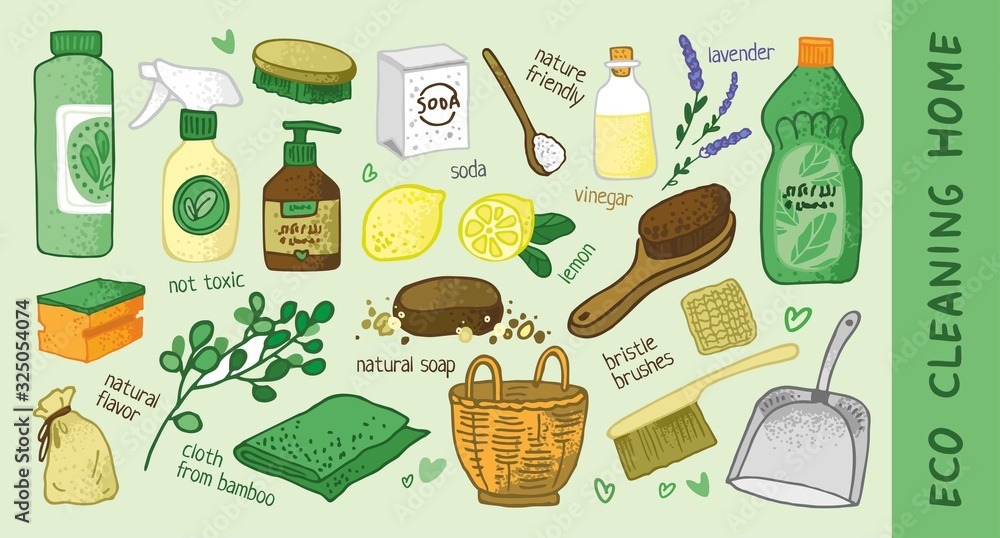Courtesy : greenerideal.com
Green non-toxic material
As a species, we’ve started to make the conscious choice to purchase and use eco-friendly and sustainable products. That has led to a lot of industry shifts to cater to this new push for green products. It has also led to the creation of a lot of buzzwords that describe these products.
You’ll see things labeled as ‘organic’ or ‘sustainable’ or ‘non-toxic’ or even ‘toxin-free’ — especially if you’re reading the labels of green cleaning products. While some of these buzzwords are just to grab your attention, others can help you make decisions on the kind of products you’re willing to buy.
What is Considered Toxic?
According to the Consumer Product Safety Commission (CPSC), a substance is considered toxic if it can cause injury or illness to a human when it’s ingested, inhaled, or absorbed through the skin.
Now, if a product causes death in more than 50% of animal test subjects within 14 days, it’s classified as highly toxic. Beyond that, there exists little to no regulation as to what can be considered toxic.
What does that mean for these labels when you see them on your makeup, shampoo or other supposedly sustainable products?
Very little, as it turns out. Beyond that simple definition from the CPSC, there is no regulation that controls whether a product can be labeled as non-toxic or toxin-free.
Even things that could potentially have environmentally positive benefits could potentially create toxic environments. For example, research shows that ships could unknowingly discard toxins into the ocean as they travel. Unchecked, it leads to ocean and aquatic pollution.
Seafood is generally considered healthy, but this is one example of how regulation can make the difference between toxic and nontoxic products.
Non-Toxic vs Toxin-Free
Is there a difference between non-toxic and toxin-free? Yes, but only in so much as one is defined by the CPSC and generally accepted by the FDA and the other is not.
Non-toxic means that the product doesn’t contain chemicals known to be toxic. As such, it’s safe to use as directed.
Toxin-free is an arbitrary definition created by the Toxic Free Foundation. While it may indicate that the product is sustainable, green and free of harmful chemicals, it isn’t a definition that’s accepted by the FDA. It’s also not used throughout the consumer industries.
Is There a Real Difference?
So non-toxic vs toxin-free – there isn’t an actual difference. There lacks regulation regarding who can use these descriptors on their products. Non-toxic might mean that the manufacturer has chosen to leave out chemicals or distance that could harm you if you use the product for long periods of time.
That could mean that your shampoo doesn’t have phthalates, or your nail polish doesn’t contain formaldehyde, but there is no definitive definition that manufacturers have to use when choosing to label their product as non-toxic.
The CPSC might define whether a product is toxic. However, when it comes to toxin-free products, no governing body official definition exists. There is the ToxicFree Foundation that offers a generalized definition of toxin-free products. To meet their criteria, the product needs to be:
- Safe: Totally free of harmful chemicals
- Natural: Only contain 100% natural ingredients
- Eco-friendly: Made in a sustainable manner from renewable resources.
This is a very general definition but not one that is industry-wide or accepted by the FDA.
This doesn’t mean that you should avoid products labeled as non-toxic or toxin-free. Instead, learn to differentiate the true meaning behind these words. Non-toxic and toxin-free products are important. At the moment, however, no standard definition exists for either of the terms.





